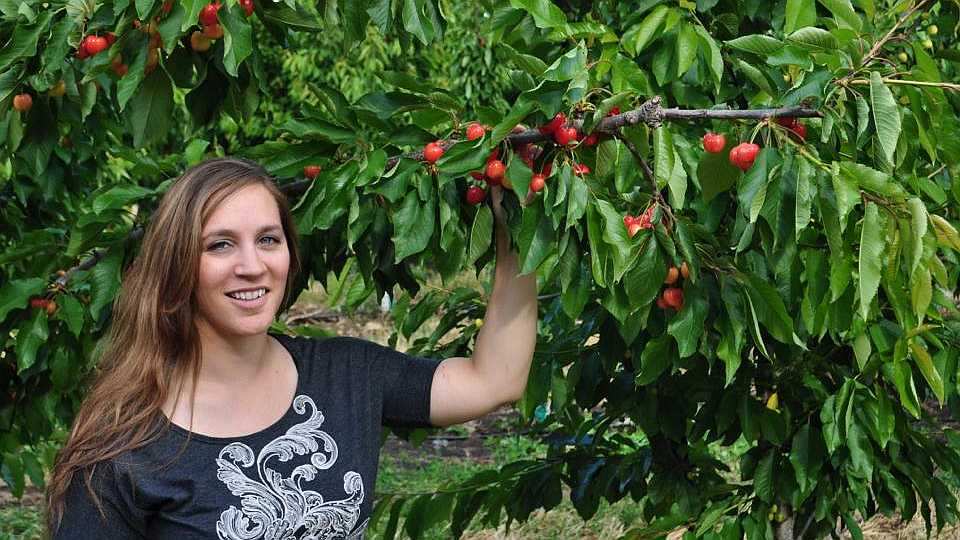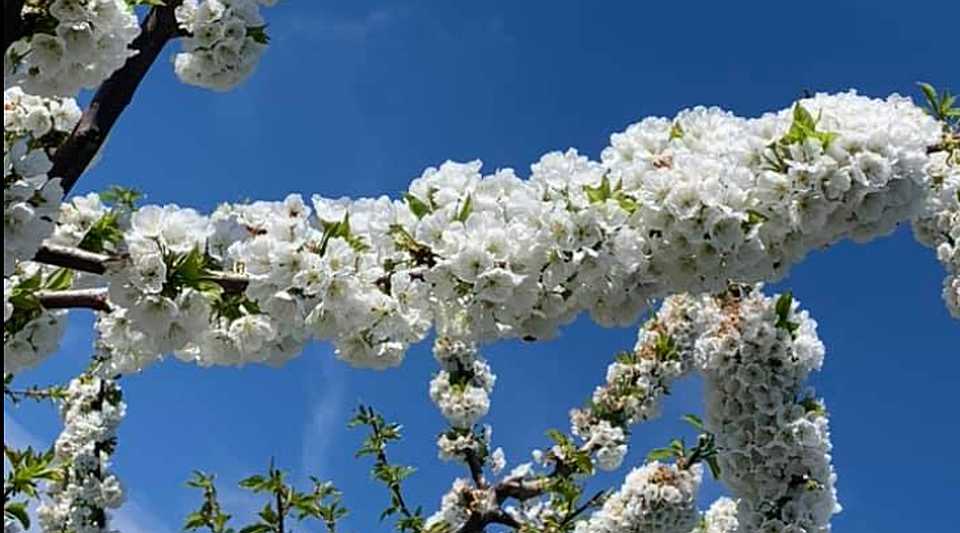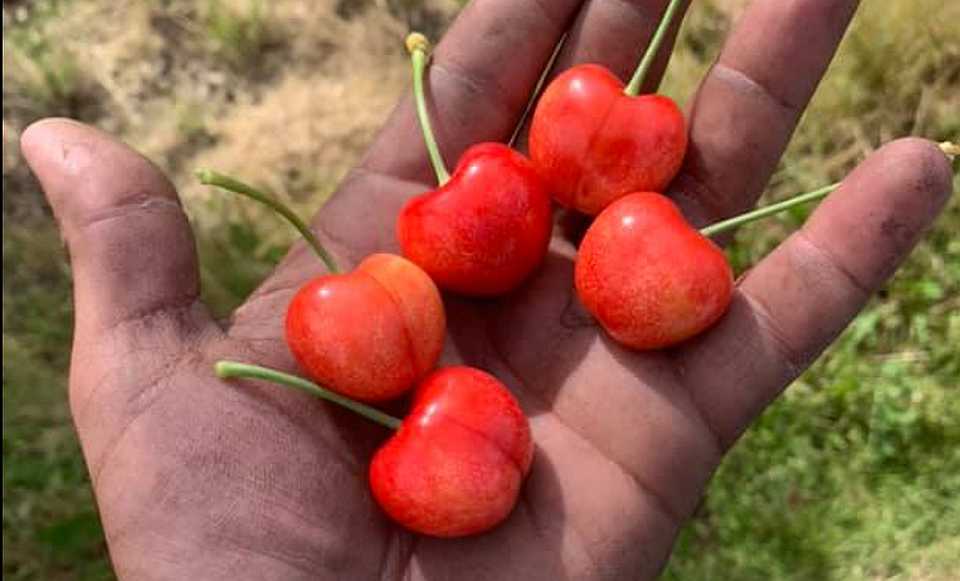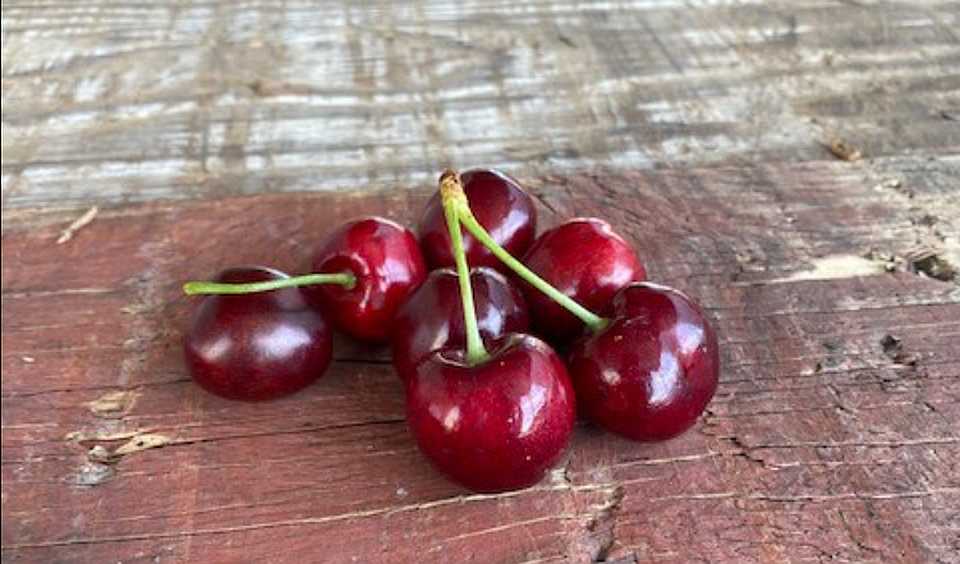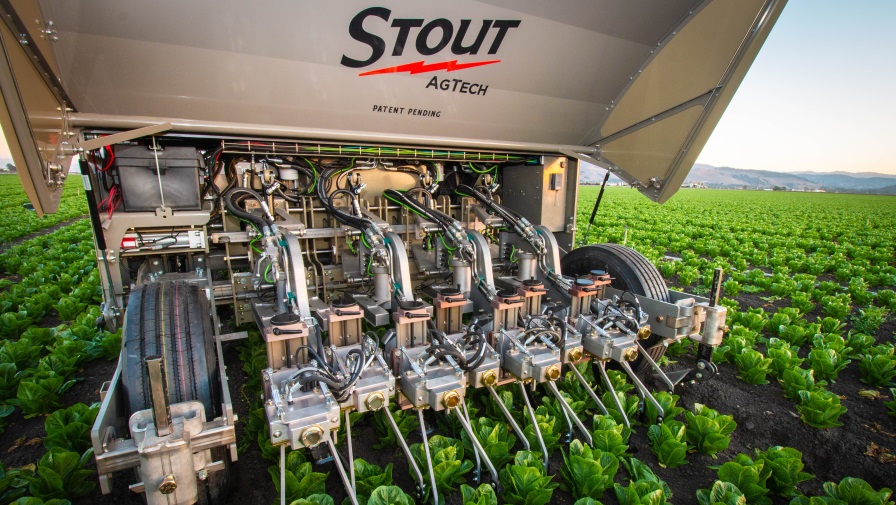Get to Know the ‘Audra Rose’ Cherry
Fifteen years ago, Richard Leitz of Leitz Farms in Mattawa, WA, was out checking the maturity of his ‘Rainier’ cherries when his 12-year-old daughter, Audra, approached him while eating a handful of another variety that looked too bright red and sour to enjoy. But when Leitz tested them, they displayed a 20% sugar content, while the ‘Rainiers’ showed just 16% or 17%.
Audra took her father back to the tree from which she had picked the mysterious sweet cherry. It was scarred up, possibly from mechanical injury or disease, but as they allowed its fruit to ripen, the cherries continued to surprise them, turning purple or mahogany with yellow-white flesh like a ‘Rainier’ but with an additional touch of blush or rose. The sweetness of the cherry continued to increase while maintaining its crispness.
The tree did not match any of Leitz’s other existing or trial varieties. Nor were grocery store produce managers or anyone else able to identify it. Physiology tests from researcher Gary Ballard at Washington State University eventually determined the variety was unique, so Leitz trademarked the name ‘Audra Rose’ after his daughter and the cherry’s color. But the cherry’s origins still remain somewhat of a mystery.
“We’ve been trying to figure it out for 17 years,” Leitz says. “It’s not even close to being a ‘Rainier’, but I wanted to be careful about it because I didn’t want to release a tree that someone else had. To me, I think it’s a mutation from a disease or the physical damage on the tree.”
Auxin, a plant hormone, regulates growth but can sometimes stimulate mutations. Environmental factors, diseases, and mechanical injuries also may lead to changes in genetic code. Whatever the cause of the mutation, it has been a happy accident for the Leitz family. Leitz started by grafting a couple of acres on his own and then worked with a partner to grow an additional 10,000 trees. He anticipates about 100,000 pounds of ‘Audra Rose’ cherries this year.
Growing the ‘Audra Rose’
One interesting aspect of the ‘Audra Rose’ cherry is that while it blooms later than other varieties, it is ready to pick first. Harvesting around sugar content, ‘Audra Rose’ is sweet enough to pick (with 18% to 20% sugar) at the end of May or early June, just 45 days after full bloom. Other standard cherries require 60 days to get to the same sugar count.
Going by taste, Leitz says the cherry is delicious enough to enjoy even earlier at 14% sugar, which leaves about a month for harvest. At four weeks, the cherries reach sugar levels of up to 30% and still maintain their crunch. Considering that other cherries require harvesting within five to 10 days, ‘Audra Rose’ provides a fairly wide window for picking, enabling flexible labor.
“Labor is always an issue, so being able to pick over the course of a month gives us some leeway and allows us to manage work better,” Leitz says.
One drawback of the ‘Audra Rose’, however, is that it can be difficult to meet the nutritional needs necessary for it to produce fertile flowers during pollination. Leitz relies on his background in soil and plant nutrition and even has his own company that develops specialty fertilizers.
“You have to know what you’re doing,” Leitz says. “The nutritional demands are more critical with this variety than others but, luckily, it’s kind of my forte.”
Looking Forward
Over the years, Leitz has done most of the marketing of the ‘Audra Rose’ on his own, garnering a loyal following with several regional grocery stores. Some produce managers have said it is the best cherry they have ever tried. But as volume increases, this year he has turned to Conrad & Adams Fruit Company for help with marketing, packing, and shipping. He is happy to see them “Taking it and running with it.”
Leitz also is considering replacing some of his existing ‘Bing’ and ‘Rainier’ blocks with ‘Audra Rose’.
“‘Bings’ are king where we’re at, but high winds limit us to picking them within just a few days before high winds and heat cause the cherries to dry up like raisins or fall off of the tree,” he says. “We’ve lost cherries like this for the last three out of five years.”
Currently, Leitz is the exclusive grower of the ‘Audra Rose’ cherry, but he is looking into offering it as a licensed club variety.
“We want to continue to be careful who we work with,” he says, “but we’re excited by the opportunity to give more people a chance to try the sweet variety.”





